2023 ROUNDUP: INVESTMENTS IN AFRICAN HEALTHTECH

A review of 2023 funding activity
February 2024
Disclaimer
This report and the information contained herein have been prepared by Salient Advisory, Inc. solely for the purpose of dissemination of information. This report contains analyses that are intended to provide highlevel information on the subject and does not constitute an exhaustive review of the issues. The analyses contained in the report are limited by the study conducted, geographies surveyed, time allocated, and the information provided to Salient Advisory, and they are dependent on the assumptions specified in this report.
Salient Advisory accepts neither responsibility nor liability to any party in respect of this report. It is not intended to be relied upon as a basis for decisions, and the reader should make decisions only after seeking specific professional advice and after carrying out their own due diligence. This report is not and should not be construed in any way as giving any recommendations to the audience or any other party. The audience shall be solely responsible for all decisions (including the implications thereof) made by them based on this report. The report has been prepared based on information made available, obtained, and collected by Salient Advisory through primary research with individuals and organizations, and other secondary sources. The information obtained and collected from the various primary and secondary sources has been used on an “as-is” basis without any independent verification.
Salient Advisory shall not be responsible for any errors or omissions, or for the results obtained from the use of this information, provides no assurance regarding the accuracy, timeliness, adequacy, comprehensiveness, and/or completeness of such information, and provides no warranty of any kind, express or implied, including, but not limited to, warranties of performance and fitness for a particular purpose.
Acknowledgments
This work was led by Zillah Waminaje, Yomi Kazeem and Abdullah Yusuf with support from Remi Adeseun and Mara Hansen Staples.
Special thanks also go to investors and donors who shared primary data on investments with us, and to Ann Allen of the Bill and Melinda Gates Foundation, who provided invaluable guidance and partnership.
This report is based on research funded by the Bill and Melinda Gates Foundation. The findings and conclusions contained within are those of the authors and do not necessarily reflect the positions or policies of the Bill and Melinda Gates Foundation.
Suggested citation: 2023 Round Up: Investments in African Healthtech. A Review of 2023 Funding Activity. Salient Advisory. February 2024.
EXECUTIVE SUMMARY
As African tech ecosystems have emerged over the past decade, billions of dollars have been invested, with healthtech startups attracting US$550 million within the last three years alone.1,2 However, while top-line information on investment in healthtech startups is typically available, in-depth, sector-specific analysis is not.
This report, 2023 Roundup: Investments in African Healthtech, presents findings on investment activity covering grant, equity, and debt investment for African healthtech startups in 2023, and outlines key trends cutting across funding targets, destinations, sources, and more.
2023 Findings
ɟ African healthtech innovations raised $167M in 2023, representing a 2% slowdown from the previous year. The sector fared better than the broader African tech ecosystem, which experienced a 39% funding decline. While the number of investments made in African healthtech actually increased by 17%, the average ticket size dropped by 15%, to $1.1M.
ɟ Investors’ biggest bets were on online pharmacy solutions, which captured 38% of all funding in 2023, mainly driven by Series B rounds to Kasha, MYDAWA, and Yodawy. Five startups (Helium Health, Kasha, MYDAWA, Yodawy, and Remedial Health) captured 59% of all funding.
ɟ We saw a >2,000% increase in funding for women-led startups, from $2M in 2022 to $52M in 2023, driven by deals for Kasha, Dawi Clinics, Chefaa, and Maisha Meds. Kasha’s $21M Series B funding was the largest investment ever made in a woman-led African healthtech company.
1 Max Cuvellier Giacomelli and Maxime Bayen. “Africa: The Big Deal, Deals Database 2019 – 2023.” Africa: The Big Deal. https://thebigdeal.substack.com/
2 The US dollar is the currency for all amounts featured in this report.
2023 Findings
ɟ Funding remains concentrated in Nigeria, Kenya, and Egypt, with significant YoY (year-over-year) swings seen in Egypt (+137%) and Ghana (-99%).
ɟ Funding for francophone Africa-based innovators remains low but grew from $5.8M in 2022 to $9.6M in 2023, driven by deals for Susu and Waspito. Côte d’Ivoire stands out as the region’s top market and Senegal is notably missing.
ɟ Equity investments accounted for 91% of funding in 2023. At pre-seed stages, $4.8M was invested across 27 deals; $32M was invested at seed stage across 23 deals; and $99M was invested at Series A or higher stages across seven deals. Grants accounted for less than 10% of funding invested, and only one debt-based investment was recorded.
ɟ Four mergers and acquisition deals occurred in 2023: MYDAWA and Grinta made acquisitions, and Grace Health and Doctoora were acquisition targets. This doubled the mergers and acquisitions activity seen in 2022 — a trend we expect to see accelerate further in 2024.
ɟ Future funding appears available: investors with an interest in the health sector raised >$600M in new funds in 2023. The extent to which these funds will be invested in tech-driven innovators is to be determined.
METHODOLOGY
More than $18 billion has been invested in African technology ecosystems since 2018, and trends are reported annually in flagship industry reports from Partech Africa, Briter Bridges, and Disrupt Africa.3 However, detailed insights on investment specifically in African healthtech startups has been lacking.
This report provides an overview of equity, grant, and debt investments in the African healthtech ecosystem in 2023.
We define African health technology innovations as private, for-profit, Africa-focused companies that deploy tech-enabled solutions to accelerate access to healthcare (via services, products, and/ or professionals) across the continent. Companies headquartered outside Africa that meet the stated criteria may be included; companies founded by African nationals with operations focused outside the continent are excluded. Companies with solutions focused on fitness/wellness and education therapy are also excluded. Traditional asset-heavy health businesses with models built entirely around physical outlets and locations, such as hospital groups and vaccine manufacturing, are excluded except in cases where such businesses are pursuing a hybrid approach by building and leveraging digital channels to broaden access to their products and services.4
When required, innovations were grouped into service offering categories with guidance from World Health Organization (WHO) classification of digital interventions, services, and applications in health.5
Data on equity, grant, and debt investments were collected from primary and secondary sources from January through December 2023. The comparative data used to analyze YOY (year-overyear) trend evolutions was derived from Salient’s database of tracked investments into African healthtech startups in the 2022 calendar year, with data collected using the same criteria and scope. Working capital loans sourced by innovators to facilitate day-to-day operations are not included as part of the debt investments tracked in the report. In cases where funding amounts were publicly disclosed in a currency other than the US dollar, the amounts have been converted using official, contemporaneous exchange rates.
Limitation: In 2023, 19% (n=27) of the investment deals reported on had undisclosed values. Additionally, as this report relies heavily on publicly available information, unannounced or confidential investment deals may have been omitted.
3 2022 Africa Tech Venture Capital Report. Partech Africa, February 2023. https://partech-admin.prod.unomena.io/media/documents/2022_Partech_Africa_Tech_VC_Report.pdf
4 An example of this would be a retail pharmacy with physical outlets that is also leveraging an online pharmacy offering as an additional sales channel. The digital component of their business places them in-scope for our work.
5 Classification of digital interventions, services, and applications in health: a shared language to describe the uses of digital technology for health, second edition. Geneva: World Health Organization; October 24, 2023.
FINDINGS
Funding in African healthtech innovations slowed down by 2% — which was much more favorable than the 39% decline in funding reported for African tech ecosystems overall.
African healthtech innovators received $167M in equity, grant, and debt funding in 2023. While this was a 2% YoY decline, it was much smaller than the 39% decline in annual funding reported for the broader African tech ecosystems in 2023.6
Despite the overall decline, funding activity across African healthtech ecosystems increased: the number of deals rose by 17%, to a total of 145. However, the average ticket size for deals decreased by 15%, to $1.1M, with 78% of innovators raising less than $1M in individual deals. In total, 114 innovators received funding in 2023, with 23 of them receiving multiple investments during that year.
figure 1
figure 1
Funding for African healthtech innovations slowed down slightly over the past year, despite an uptick in the number of deals.
Funding for African healthtech innovations slowed down slightly over the past year, despite an uptick in the number of deals.
$167M $1.1 M 145
YoY = year-over-year
YoY = Year-over-year
6 Max Cuvellier Giacomelli. “2023, The Year of the Debt.” Africa: The Big Deal, January 3, 2024. https://thebigdeal.substack.com/p/2023?utm_source=profile&utm_medium=reader2
Investors’ biggest bets in 2023 were on online pharmacy solutions, driven by Series B raises.
Innovators offering online pharmacy solutions received 38% ($63M) of all funding raised by African healthtech innovators in 2023, driven by three Series B rounds for Kenya-based Kasha ($21M) and MYDAWA ($20M), and Egypt-based Yodawy ($16M).7
While primarily focused on direct-to-consumer delivery, Kasha, MYDAWA, and Yodawy also provide additional services, such as telemedicine. The ability to facilitate end-to-end patient journeys is an important value-add in a market that has ~200 online pharmacies operating across the continent.8
Investors’ biggest bets in 2023 were on online pharmacy solutions, driven by Series B funding deals. Funding for online pharmacies was nearly twice as much as the next best-funded healthtech category (electronic medical records) in 2023 (n=114).
* The category “Others” includes Analytics, Laboratory Testing Services, Emergency Response Systems, Personal Health Records, and Learning and Training Systems.
7 Salient’s classification of innovators was based on WHO’s classification of digital interventions, services, and applications in health. See the Appendix for a full itemization of the categories.
8 Innovations in Digitizing Health Supply Chains in Africa; Market Intelligence Report. Salient Advisory, July 2023. https://healthtech.salientadvisory.com/reports/innovations-in-digitizing-health-supply-chains-in-africa/
9 The category “Others” includes Analytics, Laboratory Testing Services, Emergency Response Systems, Personal Health Records, and Learning and Training Systems. figure 2 figure 2 Investors’ biggest bets in 2023 were on online pharmacy solutions, driven by Series B funding deals. Funding for online pharmacies was nearly twice as much as the next best-funded healthtech category (electronic medical records) in 2023 (n=114).
Funding for the electronic medical records sector was driven by Helium Health’s $30M Series B raise, which accounted for 94% of all funding in the category. Supply chain and logistics innovators accounted for 17% of funding, driven by Remedial Health’s $12M Series A raise. While innovators in telehealth also raised only 17% of all funding, they were involved in the most deals across all categories. The five best-funded innovators across all African healthtech sectors received 59% of all funding.
Women-founded companies raised $52m in funding for healthtech in 2023, capturing 31% of funding compared to the previous year’s 1%, which represents a >2,000% increase.
Gender financing gaps in African healthtech ecosystems narrowed in 2023: companies founded solely by women received $52M in funding, representing 31% of all funding dollars allocated last year. This is a dramatic increase over the $2M in funding that went to women-founded companies in 2022, which represented only 1.4% of all investment. Additionally, funding to mixed-gender founding teams increased from 10% in 2022 to 21% in 2023.
Year-over-year, the number of deals that went to women-led companies were comparable — 26 deals in 2022 and 33 deals in 2023. However, the amount of funding that went to these companies grew drastically, from 1.4% to 31%, representing a >2,000% increase.
figure 3 figure 3
Funding for women-led companies grew by >2,000% to $52m in 2023.
Funding for women-led companies grew by >2,000% to $52m in 2023.
The share of deals that went to women-led companies remained consistent…
…but the amount of funding that went to women-led companies grew drastically, from 1.4% to 31%, representing a >2,000% increase.
* 3%
*3% of deals in 2023 were for companies without
Investments in Kasha, Dawi Clinics, Chefaa, and Maisha Meds accounted for 75% of all the funding alloated to women-founded companies (n=22).
Investments in Kasha, Dawi Clinics, Chefaa, and Maisha Meds accounted for 75% of all the funding allocated to women-founded companies (n=22).


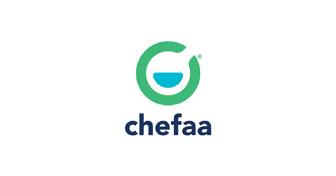

The increase in funding for women-led companies was driven by Kasha ($21M), Dawi Clinics ($8M), Chefaa ($5.3M), and Maisha Meds ($5.25M).
Two of these companies, Dawi Clinics and Chefaa, are led by African women.
Funding in 2023 was heavily concentrated in innovators located in Nigeria, Kenya, and Egypt.
Nigeria, Kenya, and Egypt were the top three destinations for funding in 2023 as innovators in these countries raised 87% ($146M) of all funding.
Overall, funding for innovators in Nigeria dropped by 6% YoY, down from the $61M raised in 2022. However, with investment activity in Nigeria occurring with a backdrop of major macro-economic challenges, including currency devaluation, the slight YoY decline in total funding to the country suggests investor interest in local innovators remains strong.
In contrast, funding for innovators in Kenya increased by 32% in 2023, as they received $52M compared to $39M in 2022. Innovators in Egypt saw a 137% increase in funding, receiving $36M in 2023, compared to $15M in 2022, largely driven by the funding for Yodawy ($16M), Dawi Clinics ($8M), and Chefaa ($5.3M).
Funding for Ghanaian healthtech startups was $376K in 2023, a massive 99% drop compared with 2022. However, the $38M that had been raised in 2022 was mainly driven by a rare Series D round of funding that brought in $35M for mPharma, and which accounted for 92% of the year’s total funding in Ghana.10,11
10 Series D equity raises have occurred rarely in African healthtech ecosystems; mPharma’s was the only one tracked in the last two years. 11 Annie Njanja. “mPharma Raises $35 Million in Round Joined By Tinder Co-founder’s JAM Fund, Bharti Executive.” Techcrunch, January 5, 2022. https://techcrunch.com/2022/01/05/mpharma-raises-35million-in-round-participated-by-tinder-co-founders-jamfund-bharti-executive/ figure 4 figure 4
Egypt and Ghana saw significant positive and negative swings respectively in year-over-year funding in 2023.
The continued underperformance of South Africa — one of the continent’s top economies — is notable: it received only $5.3M of funding in 2023, accounting for only 3% of total funding for African healthtech, as in 2022.
Funding for francophone Africa-based innovators remains low but grew from $5.8m in 2022 to $9.6m in 2023, driven by deals for Susu and Waspito. Côte d’Ivoire stands out as the region’s key market.
Thirteen healthtech innovators in the francophone Africa region received $9.6M in funding across 16 deals — a substantial increase from 2022, where funding in the region was $5.8M across 22 deals.
The increased funding was driven by seed raises by two innovators: Susu, an Ivorian health insurance company that secured $5M to expand its operations across other francophone African countries and Northern Africa, and Waspito, a Cameroonian telemedicine startup that secured $2.5M to expand into Senegal and Gabon.
Côte d’Ivoire was the region’s top market with the $5.2M raised by the country ranking the fifth highest across the continent. Cameroon ranked second, with funding in both years driven by investments in Waspito: the telemedicine startup received 98% of all funding raised in Cameroon in 2022 and 2023.
Senegal is notably absent from African healthtech funding activity, despite being one of the region’s leading economies. In 2022, two deals were tracked in Senegal, with none tracked in 2023. figure 5
Innovators in Côte d’Ivoire raised the most funding in all of francophone Africa (n=13).
Equity investments accounted for 91% of funding in 2023, while grants accounted for 7% of funding invested. Only one debt-based investment was recorded.
Just over half (52%) of the 145 deals for African healthtech innovators in 2023 were grants, highlighting the important role that grants play in bridging funding gaps for early-stage healthtech innovators.
Sponsored by the Bill and Melinda Gates Foundation, MSD, Cencora, Microsoft and Chemonics,, the Investing in Innovation program continues to stand out as the largest source of grant funding on the continent, accounting for 38% of grant-based deals for African healthtech innovators in 2023. By providing risk-tolerant grant capital and access to market support to promising innovators, the program plays a pivotal role in de-risking innovators and enabling the prospect of future follow-on funding from commercial investors and partnerships with purchasers across the industry and government.
In total, with grants being typically smaller than equity investments, they accounted for only 7% of funding raised, with an average ticket size of $168K. In comparison, equity investment accounted for 91% of funding raised, with an average ticket size of $3.2M.
Debt funding remains rare; in 2023, only one debt-based investment ($4M at Remedial Health) was recorded. Typical African health innovators may be considered too “asset-light” for debt-based funding, which is usually collateralized.12 Further, with most of these innovators at nascent and early growth-stages, they are unlikely to have the significant levels of cashflow that make viable candidates for obtaining and remitting debt investments. It is important to note that working capital loans sourced by innovators to facilitate day-today operations are not included as debt investments in this report.
Venture capital investors accounted for 62% of investors that backed African healthtech companies in 2023. Other active investor types were incubator/accelerator programs (15%), donors/foundations (7%), development finance institutions (6%), private equity firms (5%), and angel investors (5%).13
figure 7
Equity accounted for 91% of total funding in 2023 (n=145).
Pre-seed funding of $4.8m was invested across 27 deals, seed-stage funding of $32m was invested across 23 deals, and $99m was invested at Series A or higher stages across 7 deals.
Of the total number of equity deals, 88% represented pre-seed and seed-stage investments, accounting for 27% of the value of all funding raised. Seven deals at Series A and beyond accounted for 73% of all funding dollars.14 The average amount raised by pre-seed-stage innovators was $171K; seed-stage innovators, $1.4M; and innovators at Series A or higher, $14M.
12 Understanding Venture Debt Financing. Silicon Valley Bank. https://www.svb.com/startup-insights/venture-debt/how-does-venture-debt-work/.
13 Venture capital investors and donors may also participate in incubator/accelerator programs.
14 Grant funding and acquisitions are not included. Pre-seed, seed, and Series A+ deals accounted for 40% of the number of total deals.
Pre-seed and seed-stage funding accounted for a high number of deals but a low share of funding.15
Pre-seed and seed-stage funding accounted for a high number of deals but a low share of funding.

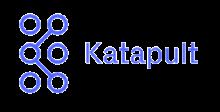






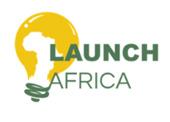



Four merger and acquisition deals occurred in 2023. MYDAWA and Grinta made acquisitions, and Doctoora and Grace Health were acquired. Merger and acquisition activity doubled in 2023 compared to 2022 — a trend we expect to continue.
Three types of transactions were evident: startup acquiring incumbent, startup-to-startup acquisition, and incumbent acquiring startup.
ɟ Startup acquiring incumbent. In Uganda, online pharmacy MYDAWA acquired Guardian Health Pharmacy, a retail pharmacy chain in Uganda. The move followed MYDAWA’s $20M funding round in July aimed at driving expansion. Startups acquiring retail pharmacy incumbents is a recurring theme as they aim to accelerate their scale by adding physical outlets to existing digital operations. In the last four years, pharmacy chains Haltons Pharmacy (Kenya), HealthPlus (Nigeria), and Vine Pharmaceuticals (Uganda) have also been acquired by mPharma.
ɟ Startup-to-startup acquisition. In Egypt, Grinta acquired Auto-Cure, an order and inventory management startup located in Alexandria, the country’s second-largest city. The acquisition broadens Grinta’s footprint across Egypt after it raised $8M to expand nationally. Auto-Cure was the latest purchase in Grinta’s expansion-byacquisition strategy, making a total of three acquisitions since 2021.
ɟ Incumbents acquiring startups. The first example comes from Nigeria, where Evercare Hospital acquired telemedicine startup Doctoora. Founded in 2015, Doctoora operated a marketplace model for listed healthcare professionals, connecting them with patients for virtual consultation sessions. One of Nigeria’s largest private hospitals, Evercare is part of the Evercare Group, which operates 30 hospitals, 16 clinics, and 82 diagnostic centers across South Asia and Africa. In Kenya, Penda Health, one the largest outpatient healthcare providers in East Africa and which operates 19 medical centers across Kenya, acquired telemedicine startup Grace Health to strengthen its telemedicine service offerings as well as user engagement. Grace Health provides affordable health services to women in low-resource settings through a digital health assistant and virtual consultations.
Beyond merger- and acquisition-related exits, the closure of 54gene was another notable market exit in 2023. 54gene had raised $45M in its two years of operation with the aim of building a business model on African genomic data to facilitate drug discovery and scale its operations across genetics, bioinformatics, preclinical, clinical, and commercial programs.16
Equity investors interested in African health raised over $600m in new funds in 2023. The extent to which these funds will be deployed for healthtech remains to be seen.
Broader trends in African and global tech ecosystems point towards a sustained decline in startup funding. Even so, investors with a track record or mandate for investing in health in Africa announced >$600M in new funds in 2023.
16 Olumuyiwa Olowogboyega. “After raising $45 M in two years, 54gene is shutting down.” TechCabal, September 27, 2023. https://techcabal.com/2023/09/27/54gene-shutting-down-operations/
figure 9
Over $600m in new funds were announced by investors with an interest in healthtech.
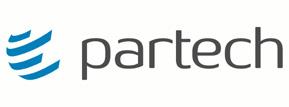
France Up to $15m $263m

South Africa $10m $205m


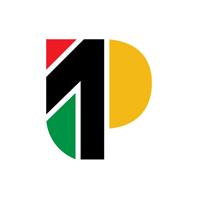


Nigeria $50-$150k $43m
Track record: Partech Partners participated in Reliance Health’s (Nigeria) record-se ing Series B round in 2022.
Mandate: Norrsken22 specifies health technology as a key sector of interest for its new fund.
Track record: VKAV has backed healthtech startups at early and growth stages, most recently participating in Chefaa’s (Egypt) $5.2 million round.
USA Unspecified
Cayman Islands
$50m
Unspecified $50m
Mandate: THF’s focus is investing in innovative models to improve access, affordability, resilience, and quality of healthcare in Africa.
Track record: P1 Ventures has invested in Reliance Health and Yodawy (Egypt). The new fund also specifies healthtech as a key sector of interest.
Switzerland Unspecified $50m
France / Côte d’Ivoire
Unspecified $13m
Mandate: Seedstars Africa Ventures’ investment mandate for the new fund specifies healthtech as a key sector.
Track record: Saviu Ventures has invested in Waspito (Cameroon) and Lapaire (Côte d’Ivoire) and is exclusively focused on Francophone African markets.
* Norrsken22 is a different entity from the Norrsken Foundation’s early-stage impact accelerator.
The extent to which the newly raised capital will be deployed to fund healthtech innovators is unclear. As such, these funds are not an accurate picture of the universe of funding available to African healthtech innovators. However, this does indicate that a high level of latent funding, across seed and growth stages, may be available to promising innovators who can convince investors to back their business models in the coming months.
There’s also a distinct possibility that some investors may be seeking more traditional health businesses that have significant physical operations as an anchor of their business models. For instance, Transform Health Fund’s first deal for its new fund was a $20M investment in Africa Healthcare Network, a chain of dialysis service centers that has operations in over 45 outlets across five African countries.17
17 Press release. “Africa Healthcare Network (AHN) Secures $20 Million in Funding Led by Africa50 and AfricInvest For A Continent-Wide Expansion” NextBillion, November 23, 2023. https://nextbillion.net/news/press-release-africa-healthcare-network-ahn-secures-20million-in-funding-led-by-africa50-and-africinvest-for-a-continent-wide-expansion/
